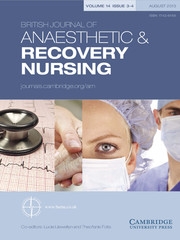Article contents
Patients’ Perceptions of Informed Consent for Surgical Procedures in Northern Ireland: A Retrospective Survey
Published online by Cambridge University Press: 01 August 2008
Abstract
Consent for surgical procedures is in the public domain following the Bristol and Liverpool enquiries [Department of Health, 2001a; House of Commons, 2001]. A legal and ethical principle exists whereby consent must be obtained before commencing a physical examination, starting treatment or physical investigation, or providing care. Non-compliance with this requirement is treated most seriously and professionals who choose to do otherwise risk investigation by the relevant regulatory body and/or legal proceedings. Guidance for health and social care professionals, including students, relates specifically to physical interventions on living individuals. The following research investigated patient satisfaction with the process of declaring informed consent prior to surgery. In 2006, a retrospective descriptive survey of a random sample of 200 patients two months following surgery was conducted in a local hospital in Northern Ireland. Data analysis generated frequencies and percentages using the Statistical Package for the Social Sciences (SPSS). Results suggested that the majority of respondents expressed satisfaction with the amount of information they had received, and most preferred to receive information from a mixture of doctors and nurses. The majority wanted the same amount of information, though there was a significant number who wanted more information. The importance of ensuring the patient receives adequate information prior to surgery/procedure is imperative if the health service is to offer transparency in surgical service provision in line with government guidelines.
- Type
- Original Article
- Information
- Copyright
- Copyright © British Association of Anaesthetic and Recovery Nursing 2008
References
- 2
- Cited by


